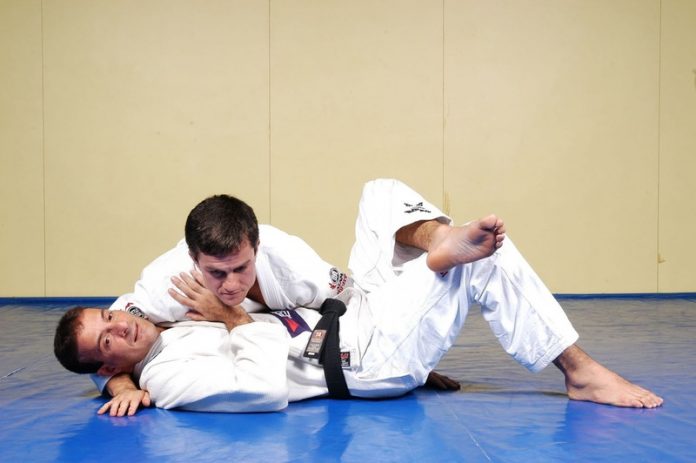
Side control is arguably the most common position in BJJ. There’s no way past a side control variation during a roll, whether you’re on the receiving or giving an end of it. Very often, people misunderstand side control, especially in terms of points and competition use. The fact that there are several variations which sometimes do not seem to fit the description is even more confusing for people new to the sport. As a position, side control is a fundamental pillar of Jiu-Jitsu basics. There’s no way around it and the sooner you understand all the associated variations, the sooner you can put them to good use.
Side control is one of those positions that people perceive differently as they progress through Jiu-Jitsu. At first, they see it as the ultimate position of pressure, where you get points and you can hold your opponent indefinitely. Both of these perceptions soon prove to be wrong, though. What students soon find out is that side control is actually a very dynamic position, especially against an experienced opponent. And even though it is part of the Jiu-Jitsu basics, holding on to it requires time on the mats and repetition. Only when you truly get eth dynamic nature of the position and you learn how to with your weight effortlessly, you can use side control to pin someone in place.
From a competition perspective, many people have difficulties grasping the points associated with side control. Let me make it abundantly clear – there are no points! Yes, you read that right, side control brings you nothing more than perhaps an advantage. The three points people usually associate with it are actually awarded for passing the guard. Since most people obtain side control after passing, the perception is that the position itself brings points. Also, there are no points if you’re on the bottom in side control and you manage to end up on top. Since there’s no guard involved it is just a reversal and not a sweep .therefore, there’s nothing more than an advantage once again.
Do not just learn Jiu-Jitsu basics, learn them in a fun and entertaining way. Who better to amuse you while teaching you slick techniques and sneaky counters than Kurt Osiander! His “Fundamentals Of A Jiu-Jitsu Renegade” DVD set is a must-have for beginners and experienced grapplers alike. Sneak peak: it offers so much more than just side control information…
Jiu-Jitsu Basics: Side Control
Side control is basically a cross body position which allows you upper body control. IN terms of BJJ, it is a great place to be, especially if you have a dynamic attacking game. Side control offers plenty of submission options that involve both joint locks and strangles. It is also the gateway to checkmate positions like the mount or back control. Furthermore, there are actually very few direct attacks a bottom person can efficiently do, making it a very safe spot to be.
The key principle of the position is upper body control through pressure and mechanical leverage. when in side control you need to control either the neck or the hips of your opponent. Traditionally it is more common to control the head. your body should be at a 90-degree angle to the opponents. This provides both pressure and stability. In terms of Jiu-Jitsu basics, you want to be able to stay in side control at least 5-10 seconds without giving away the position.
This might prove to be a really difficult task. If you’re up against an experienced, or much larger and stronger opponent, side control is very difficult to retain. There are certain tips and tricks to help weight distribution and pressure, of course. However, they do not guarantee you a long ride time, nor an inescapable pin. The best way to achieve constant control is by staying active. If you keep moving, holding side control is going to become a breeze. To do that, you’ll need to switch back and forth between some of the most common side control variations in BJJ.
“Classic” Side Control
Classic side control is also known as wrestlers side control. For it, you want to become very compact as opposed to heavy. This variation of side control is all about framing instead of pressure. You want to be past your opponent’s legs, of course, in order to establish the position.
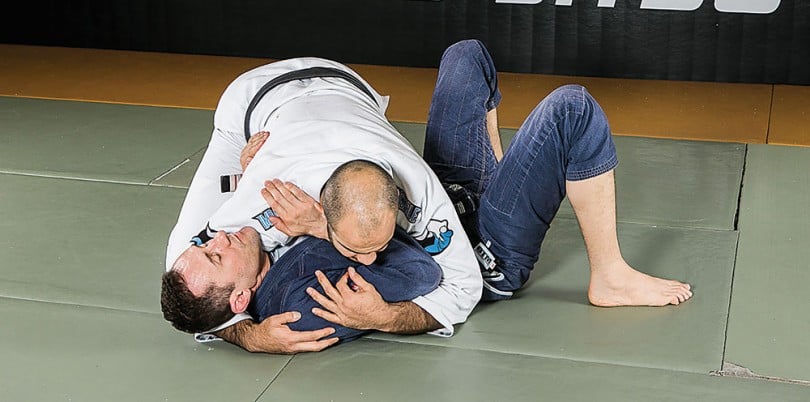
The key point in the side control variation is staying tight. Your knee on the side of the cross-face should touch your elbow at all times. the other knee should be right up against the opponent’s hips. Your free arm can go in a lot of different positions, depending on the situation. You can’t master Jiu-Jitsu basics without really getting the nack for this one.
100 Kg Position
Many people’s favorite (and certainly one of my top contenders) is the 100 kg side control variation. For this positions, the focus is completely on pressure. It is a lot less compact than the classic one and it allows for more space. But where it lacks in compactness it makes up with pressure and weight.
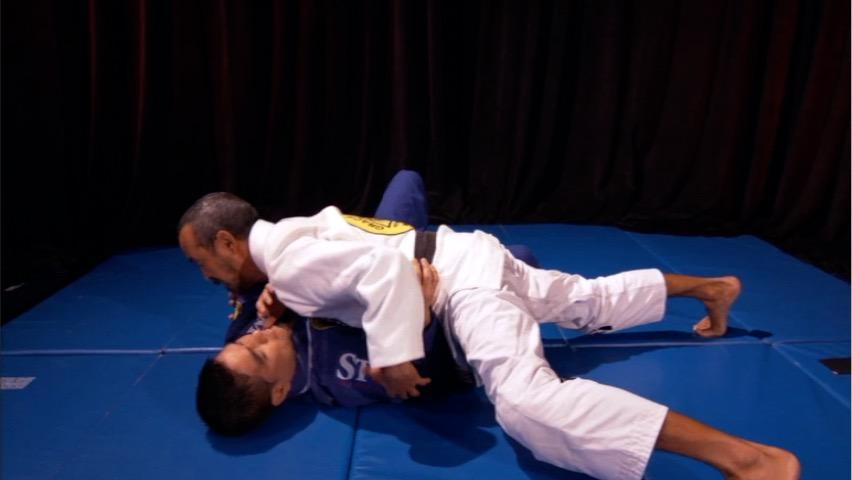
A cool wrestling trick is to dig your chest into your opponent’s ribs while pushing off your feet. Also, make sure you have your shoulder pressing hard on their jaw. A lot less direct attacks are available from here but it is the strongest controlling side control variation there is.
Kesa Gatame Variations
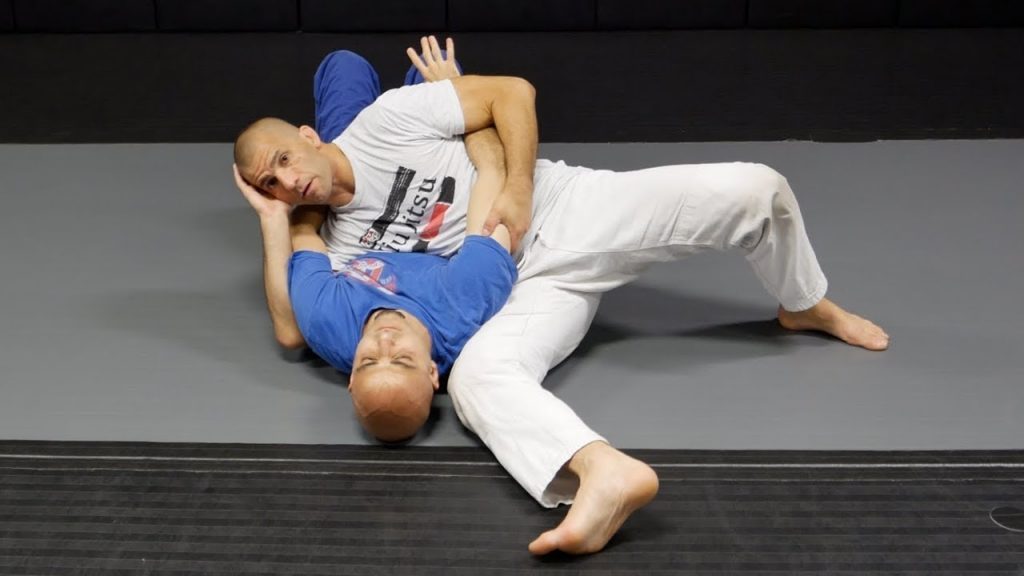
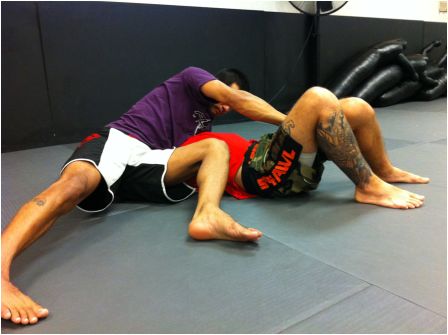
North South And Knee On Belly
A couple more Jiu-JItsu basics deserve an honorable mention even though they’re not technically side control. The North South is an interesting one as it is considered a side control variation even though it is technically not from the side. However, it does offer a route to establish side control on the opposite side, should the need arise.
Knee on belly works perfectly with side control, however, it is a position of its own. Getting there also merits two points, if you can hold on longer than 3 seconds. Despite this, knee on belly and side control will always work together, so if you like to become better at side control, make sure you also include knee on belly drills in your game.
Side Control Escape – The Biggest Mistake That Everyone Does


![Darce Choke Encyclopedia – Origins, Mechanics and Variations [2025] BJJ, choke, Brabo, BJJ Darce Choke, D'arce Choke, Darce BJJ Choke](https://bjj-world.com/wp-content/uploads/2017/11/JungPoirierLeeYahoo-218x150.jpg)









![Defensive Wrestling for Jiu-Jitsu Pat Downey DVD Review [2025] Defensive Wrestling for Jiu-Jitsu Pat Downey DVD Review](https://bjj-world.com/wp-content/uploads/2025/04/defensive-wrestling-for-jiu-jitsu-pat-downey-dvd-review-218x150.png)

![Mastering Your Sales Eliot Marshall DVD Review [2025] Mastering Your Sales Eliot Marshall DVD Review](https://bjj-world.com/wp-content/uploads/2025/04/mastering-your-sales-eliot-marshall-dvd-review-218x150.png)

![Modernized Headquarters Passing Shawn Melanson DVD Review [2025] Modernized Headquarters Passing Shawn Melanson DVD Review](https://bjj-world.com/wp-content/uploads/2025/04/headquarters-passing-shawn-melanson-dvd-review-218x150.png)
![4 Weeks To A Better Guard Travis Stevens DVD Review [2025] 4 Weeks To A Better Guard Travis Stevens DVD Review](https://bjj-world.com/wp-content/uploads/2025/04/4-weeks-to-a-better-guard-travis-stevens-dvd-review-218x150.png)

![Knee Lever John Wayne Sweep Adam Wardzinski DVD Review [2024] Knee Lever John Wayne Sweep Adam Wardzinski DVD Review](https://bjj-world.com/wp-content/uploads/2024/12/john-wayne-sweep-adam-wardzinski-dvd-review-100x70.png)
![Woj Lock the World Chris Wojcik Ankle Locks DVD Review [2024] Woj Lock the World Chris Wojcik Ankle Locks DVD Review](https://bjj-world.com/wp-content/uploads/2024/12/woj-lock-the-world-chris-wojcik-dvd-review-100x70.png)
![Basic Closed Guard Jasmine Rocha DVD Review [2024] Basic Closed Guard Jasmine Rocha DVD Review](https://bjj-world.com/wp-content/uploads/2024/11/basic-closed-guard-jasmine-rocha-dvd-review-100x70.png)
![Special K Guard Neil Melanson DVD Review [2025] Special K Guard Neil Melanson DVD Review](https://bjj-world.com/wp-content/uploads/2025/03/special-k-guard-neil-melanson-dvd-review-100x70.png)
![Leg Lock Entries Helena Crevar DVD Review [2025] Leg Lock Entries Helena Crevar DVD Review](https://bjj-world.com/wp-content/uploads/2025/03/leg-lock-entries-helena-crevar-dvd-review-100x70.png)
![Unpinnable Mount Escape Mastery Haleem Syed DVD Review [2025] Mount Escape Mastery Haleem Syed DVD Review](https://bjj-world.com/wp-content/uploads/2025/01/mount-escape-mastery-haleem-syed-dvd-review-100x70.png)
![Welcome To The Darce Side Travis Moore DVD Review [2025] Welcome To The Darce Side Travis Moore DVD Review](https://bjj-world.com/wp-content/uploads/2025/01/welcome-to-the-darce-side-travis-moore-dvd-review-100x70.png)

![The Whole Omoplata Enchilada Lyanne Perez DVD Review [2024] The Whole Omoplata Enchilada Lyanne Perez DVD Review](https://bjj-world.com/wp-content/uploads/2024/11/whole-omoplata-enchilada-lyanne-perez-dvd-review-100x70.png)



![Front Headlock and Turtle Escapes Brian Glick DVD Review [2024] Front Headlock and Turtle Escapes Brian Glick DVD Review](https://bjj-world.com/wp-content/uploads/2024/11/headlock-and-turtle-escapes-brian-glick-dvd-review-100x70.png)
![Forging The De La Riva Guard Giancarlo Bodoni DVD Review [2025]](https://bjj-world.com/wp-content/uploads/2025/02/de-la-riva-guard-giancarlo-bodoni-dvd-review-100x70.png)
![Understanding The Distance On Top Gui Mendes DVD Review [2024] Understanding The Distance On Top Gui Mendes DVD Review](https://bjj-world.com/wp-content/uploads/2024/10/distance-on-top-gui-mendes-dvd-review-100x70.png)

![Reverse De La Riva System Mikey Musumeci DVD Review [2024] Reverse De La Riva System Mikey Musumeci DVD Review](https://bjj-world.com/wp-content/uploads/2024/11/reverse-de-la-riva-system-mikey-musumeci-dvd-review-100x70.png)

![Old School BJJ Ricardo Cavalcanti Fundamentals DVD Review [2024] Old School BJJ Ricardo Cavalcanti Fundamentals DVD Review](https://bjj-world.com/wp-content/uploads/2024/09/old-school-bjj-ricardo-cavalcanti-dvd-preview-100x70.png)


![Leg Lock Strategies: Navigating Entanglements Jack Stapleton DVD Review [2024] Leg Lock Strategies: Navigating Entanglements Jack Stapleton DVD Review](https://bjj-world.com/wp-content/uploads/2024/12/navigating-entanglements-jack-stapleton-dvd-review-100x70.png)
![Zen Guide To Submission Grappling Margot Ciccarelli DVD Review [2025] Zen Guide To Submission Grappling Margot Ciccarelli DVD Review](https://bjj-world.com/wp-content/uploads/2025/02/submission-grappling-margot-ciccarelli-dvd-preview-100x70.png)
![Charles Allan Price Building Workouts For BJJ DVD Review [2024] Charles Allan Price Building Workouts For BJJ DVD Review](https://bjj-world.com/wp-content/uploads/2024/09/charles-allan-price-building-workouts-for-bjj-review-100x70.png)
![Finish on the Back Ethan Crelinsten DVD Review [2024] Finish on the Back Ethan Crelinsten DVD Review](https://bjj-world.com/wp-content/uploads/2024/10/finish-on-the-back-ethan-crelinsten-dvd-review-100x70.png)
